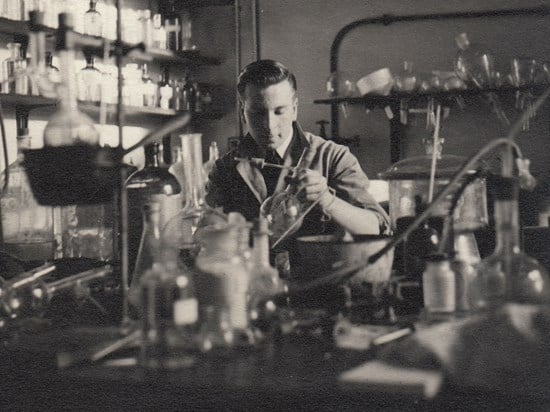What do the thymus gland, mustard gas and X-ray beams all have in common?
It’s not a joke - they are all key components in the history of The Institute of Cancer Research.
Over the last year, I’ve been charged with coming up with a list of the ICR’s greatest ever discoveries. It’s been a fun job – I’ve been reading up on the organisation’s beginnings, dusting off hard copy editions of journals dating back to the 1920s, and sorting through boxes of old photos to discover more about the ICR and its history.

Ted Sainsbury, circa 1930
From the origins of the ICR as a small research laboratory of our partner hospital, The Royal Marsden, to our role now as one of the world’s leading centres for cancer research, the ICR has made some really important scientific and clinical discoveries.
We’ve made some fundamental biological discoveries, such as the revelation that damage to DNA is the basic cause of all cancers, or the identification of genes that predispose people to getting certain types of tumours. We’ve made advances in physics and chemistry which have driven forward radiotherapy and chemotherapy. And we’ve led the discovery of new targeted drug therapies for cancer, and worked with The Royal Marsden on their development.
For me this was a really interesting project for several reasons: partly to learn more about the history of cancer research, and how we built up to what we know today; but also getting to know the organisation that I work for in much more detail.
I certainly turned up some surprises! For example, the last person to discover the function of a human organ was actually a student at the ICR. During his PhD, Jaques Miller discovered the essential role of the thymus in our immune systems, helping lay the foundation for all of modern immunology. Anyone else now feel like an underachiever?
You can see our final list of historical discoveries on our new website giving a snapshot of some of these achievements, but over the next couple of weeks we will be launching a series of new feature articles looking at each in more detail – at how the discoveries were made, and why they made such an impact on cancer research.
We start today with research done by Sir Ernest Kennaway in the 1920s and 30s, identifying many of the cancer-causing chemicals found in cigarette smoke. You can read more here.
We’ll be getting to the thymus, mustard gas and X-ray beams in the weeks to come.
comments powered by